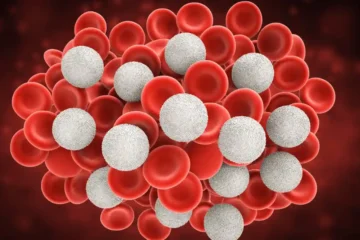Platelets, also known as thrombocytes, are tiny blood cells that play a crucial role in the clotting process, which is essential for preventing excessive bleeding. Platelets are produced in the bone marrow and circulate in the blood, ready to spring into action whenever a blood vessel is damaged.
Maintaining an adequate platelet count is vital for overall health and well-being. Here’s why platelet count is important and how it impacts the body:
1. Clot Formation:
Platelets are the first responders to any injury or damage to blood vessels. When a blood vessel is injured, platelets rush to the site and adhere to the damaged area, forming a plug to stop bleeding. This process, known as primary hemostasis, is crucial for preventing excessive blood loss and promoting wound healing.
2. Hemostasis:
Platelets play a key role in the intricate process of hemostasis, which involves the prevention and cessation of bleeding. Along with other components of the coagulation cascade, platelets help stabilize the clot and reinforce its structure, ensuring effective hemostasis.
3. Prevention of Excessive Bleeding:
Individuals with low platelet counts, a condition known as thrombocytopenia, are at risk of experiencing prolonged bleeding and bruising even from minor injuries. Thrombocytopenia can result from various factors, including bone marrow disorders, certain medications, autoimmune diseases, and infections. Monitoring platelet count is essential for diagnosing and managing thrombocytopenia to prevent complications.
4. Surgical Procedures:
Before undergoing surgery or invasive medical procedures, healthcare providers often assess a patient’s platelet count to evaluate their risk of bleeding during and after the procedure. Adequate platelet levels are necessary to ensure proper clot formation and minimize the risk of excessive bleeding and complications.
5. Monitoring Health Conditions:
Platelet count is routinely measured as part of a complete blood count (CBC) to assess overall health and detect underlying medical conditions. Abnormal platelet counts may indicate various health issues, including infections, inflammatory disorders, bone marrow disorders, and clotting disorders. Monitoring changes in platelet count over time can help healthcare providers diagnose and manage these conditions effectively.
6. Blood Disorders:
Platelet abnormalities can contribute to the development of blood disorders, such as thrombocytosis (elevated platelet count) and thrombocytopenia (low platelet count). These conditions may increase the risk of thrombotic events, such as blood clots, or bleeding disorders, highlighting the importance of maintaining a balanced platelet count.
Conclusion:
In summary, platelet count plays a critical role in maintaining hemostasis, preventing excessive bleeding, and supporting overall health. Regular monitoring of platelet levels is essential for diagnosing underlying medical conditions, assessing bleeding risk during surgical procedures, and ensuring optimal health outcomes. By understanding the importance of platelet count and its role in the body, individuals can take proactive steps to protect their health and well-being.
FAQs
- What is a platelet count, and why is it important?
- A platelet count measures the number of platelets in a person’s blood. It is essential because platelets play a crucial role in clot formation, preventing excessive bleeding, and promoting wound healing.
- What is a normal platelet count range?
- The normal range for platelet count typically falls between 150,000 and 450,000 platelets per microliter of blood. However, the exact range may vary slightly between different laboratories.
- What can cause low platelet counts?
- Low platelet counts, known as thrombocytopenia, can be caused by various factors, including autoimmune disorders, viral infections (such as HIV or hepatitis), certain medications (like chemotherapy drugs), bone marrow disorders, and excessive alcohol consumption.
- How is platelet count measured?
- Platelet count is measured through a simple blood test called a complete blood count (CBC). A small sample of blood is drawn from a vein, and the number of platelets is counted using specialized laboratory equipment.
- What are the symptoms of low platelet counts?
- Symptoms of low platelet counts may include easy bruising, prolonged bleeding from cuts or injuries, petechiae (small red or purple spots on the skin), nosebleeds, and excessive bleeding during menstruation.
- What can I do to maintain a healthy platelet count?
- Maintaining a balanced and nutritious diet, staying hydrated, avoiding excessive alcohol consumption, quitting smoking, managing stress levels, and exercising regularly can help support optimal platelet levels.
- Can high platelet counts be a cause for concern?
- High platelet counts, known as thrombocytosis, can sometimes indicate underlying health conditions such as inflammation, infection, bone marrow disorders, or certain cancers. It’s essential to consult a healthcare provider for proper evaluation and management.
- How often should I have my platelet count checked?
- The frequency of platelet count checks depends on individual health factors, medical history, and healthcare provider recommendations. For most individuals, platelet counts are checked as part of routine blood tests during regular check-ups or when there are concerns about bleeding or clotting disorders.



